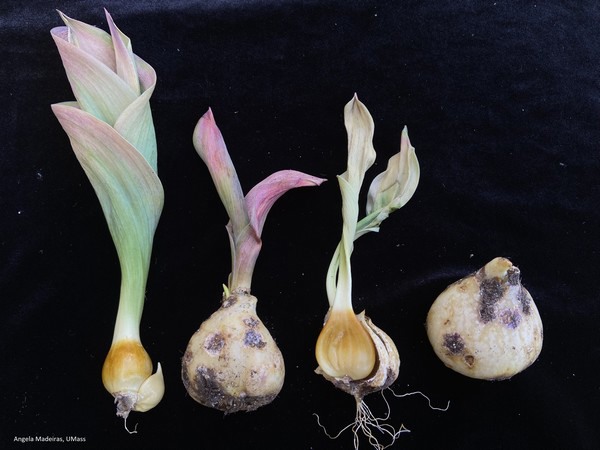Fusarium bulb rot was diagnosed in potted tulips this week at the UMass Extension Plant Diagnostic Lab. This disease is caused by Fusarium oxysporum f. sp. tulipae, a strain of F. oxysporum that is highly specific to tulips. Bulbs become infected in the field when the fungus penetrates tulip roots and travels into the basal plate. This fungus also produces large amounts of ethylene, which contributes to disease development.

Symptoms include yellowing or reddening of leaves from the tips down, aborted flower buds, stunting, wilting, and dieback. Sometimes a brownish substance is observed between the layers of the bulb, a condition called gummosis. Rot is typically centered around the basal plate but may appear anywhere on the bulb. Bulbs may be shrunken or feel lighter than normal. Rotting bulbs may smell sour. Roots may be rotted or absent. White or pinkish fungal growth may be observed, most often on the basal plate.
For management, Fusarium diseases are best controlled through cultural practices and sanitation. Inspect bulbs carefully prior to planting and discard any that are shrunken, light in weight, or show symptoms of rot. Avoid overwatering and over-fertilizing. Maintain soil pH in the range of 6.0-7.0 for optimum growth of tulips. Discard infected plants. Cultivars vary widely in susceptibility.
Source: umass.edu










